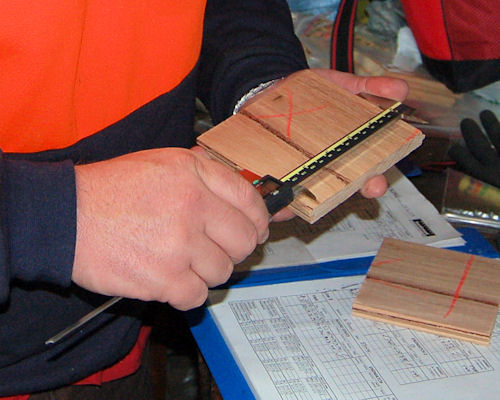Introduction
 Audio for slide 1 (mp3 |6|KB)
Audio for slide 1 (mp3 |6|KB)
Ask a metal worker, and he'll probably say 4.00.
Ask an engineer, and he's likely to say 4 to 5, but best to build in a safety margin and call it 8.
Ask an economist, and he'll look at you sideways and whisper: What do you want it to equal?

 Audio for slide 3 (mp3 |6|KB)
Audio for slide 3 (mp3 |6|KB)
Because of this, we'll look at the way numbers are used by manufacturing workers in general for taking measurements and doing basic calculations.
So the focus of the unit will be on broad principles and mathematical rules, which will allow you to apply these concepts to your own situation back on the job.


Working through this unit
Audio 4 (mp3 |6|KB)There are two sections in this unit:
- Calculating
- Measuring.
Each section begins with an Overview, which introduces the topics covered and gives you a link to the assignment you will need to undertake to demonstrate your understanding. At the end of Section 2 is the Assignment for the unit. This is designed to test your ability to use a variety of measurements in typical calculations. Your trainer may ask you to submit the assignment as part of your assessment evidence for the unit.

Practical demonstration
Because the process of measuring is very much a practical activity, your final assessment of competency will include some hands-on demonstrations. To help you get ready for these assessment activities, have a look at the Practical demonstration checklist by clicking on the link below:
Practical demonstration checklist (Doc 78 kb)

The checklist sets out the sorts of things your trainer will be looking for when you undertake the practical demonstrations. Make sure you talk to your trainer or supervisor about any of the details that you don't understand, or aren't ready to demonstrate, before the assessment event is organised. This will give you time to get the hang of the tasks you will need to perform, so that you'll feel more confident when the time comes to be assessed. When you are able to tick all of the YES boxes in the checklist you will be ready to carry out the practical demonstration component of this unit.
Select the link below to go to the first section of this unit.

 Go to Calculating
Go to Calculating